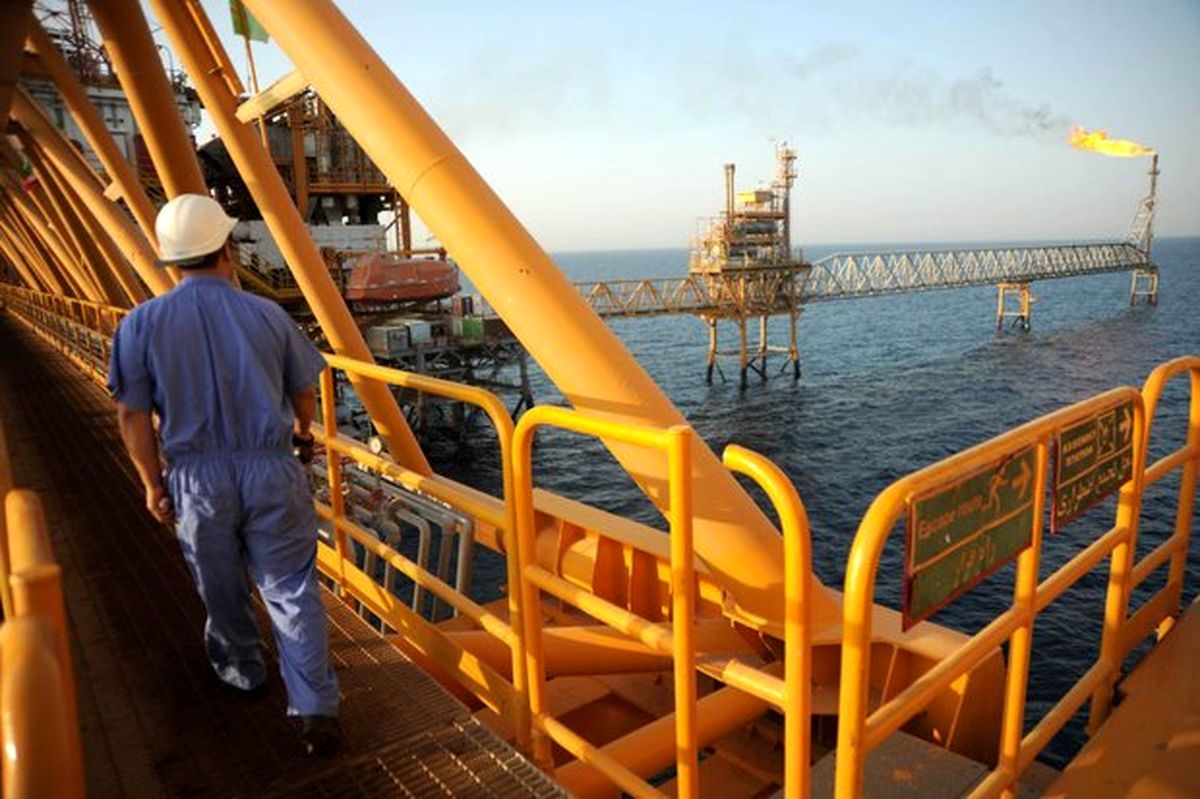Iran will soon begin drilling at the Arash natural gas field located on the maritime borders of Iran, Kuwait, and Saudi Arabia in the Persian Gulf, despite the recent deal between the two Arab countries to develop the field.
“Comprehensive studies on the joint Arash field have been completed following drilling exploration wells and conducting seismic surveys,” Iran’s Oil Minister Javad Owji wrote on Twitter on March 28.
He said that the drilling operation in the field “will begin soon, with the installation of jackets” and added that “unilateral actions would not prevent the implementation of Iran’s plan.”
Owji’s remark comes after Saudi Arabia and Kuwait signed a document to develop the Arash gas field without Tehran’s participation.
On March 21, the two Arab countries signed an agreement for the joint development of the Arash gas field, also known as Durra, which is reportedly expected to produce 1 billion cubic feet of natural gas and 84,000 barrels of condensates per day. Under the document, production will be divided equally between the two sides. The development will be carried out by Al-Khafji Joint Operations, a joint venture between Kuwait Gulf Oil and Aramco Gulf Operations.
The recent deal is part of a 2019 agreement between Saudi Arabia and Kuwait, which resolved a longstanding bilateral dispute over oil output in jointly-operated fields in the neutral zone.
Meanwhile, the Iranian Foreign Ministry described the deal to develop the Arash field as “illegal.”
On March 26, Iran’s Foreign Ministry Spokesperson Saeed Khatibzadeh said that the gas field is shared between the three countries, and exploiting it requires coordination and cooperation between the three countries.
“Iran has repeatedly stated that it is ready to enter negotiations with its neighbors - Kuwait and Saudi Arabia - on how to exploit this joint field,” Khatibzadeh said, adding that Iran “reserves the right to exploit the gas field.”
The Arash/Durra offshore gas field was discovered in 1967 and is estimated to have total proven reserves of around 20 trillion cubic feet of gas. The field has been a source of contention between Iran and Kuwait for decades. Kuwait claims it owns more than 50 percent of the field, while Iran believes that both countries have equal shares.







 Azerbaijan’s historical biographical film “Taghiyev” has won the Best Feature Film award at the Dehancer Colorist Awards 2024. The film, which chro...
Azerbaijan’s historical biographical film “Taghiyev” has won the Best Feature Film award at the Dehancer Colorist Awards 2024. The film, which chro...
 Azerbaijan has been recognized as one of the safest countries in the world, ranking 90th among 163 countries on the Global Terrorism Index 2025 (GTI).
Azerbaijan has been recognized as one of the safest countries in the world, ranking 90th among 163 countries on the Global Terrorism Index 2025 (GTI).
 The Azerbaijani Defense Ministry has reported ongoing shelling of its army positions by Armenian forces since last week.
The Azerbaijani Defense Ministry has reported ongoing shelling of its army positions by Armenian forces since last week.



